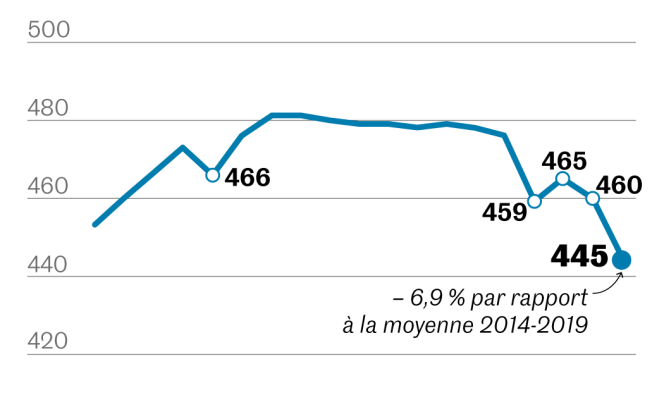The decline in consumption continued “throughout the year 2023” In France. This trend confirms the dynamics already observed in 2022, at the height of the energy price crisis on the wholesale market. This is what emerges from the report presented on Wednesday February 7 by the manager of the Electricity Transmission Network (RTE).
Taking into account weather hazards, the volume consumed was 445 terawatt hours (TWh) during 2023. That is to say a decline of 3.2% compared to 2022, and even 6.9% compared to the average for the 2014 period. -2019. The total is also below that of 2020 (459 TWh), although marked by the slowdown in activity, a consequence of Covid-19.
Since October 2022, the government has demonstrated its ambition to reduce electricity and gas consumption, through an energy sobriety plan. The idea being, in particular, to anticipate the electrification of uses.
According to a survey of a large panel of more than eleven thousand people, presented in June 2023 by RTE with Ipsos pollsters, the drop in demand observed during the winter of 2022-2023 was more suffered than chosen. Among the different possible motivations, respondents first retained the increase in the cost of electricity and general inflation (food, housing, gasoline). The argument of good citizenship, consisting of avoiding power cuts in the event of too high demand, only came later. And this even though the low availability of nuclear power plants in 2022, due to a corrosion problem on certain pipes, had raised fears of an imbalance between supply and demand.
Partial recovery of nuclear production
During 2023, the fear of a supply disruption has receded. While consumption has fallen, electricity production has increased in the country. It came back to 494 TWh. This is significantly better than the 445 TWh of 2022, which had constituted A “historic minimum” since 1992, recalls RTE. This recovery is explained by the partial recovery of nuclear power (320 TWh, or 64.8% of the electricity mix), which however still remains very far from the average between 2014 and 2019 (around 395 TWh).

THE renewable energies and other low-carbon sources are also progressing from one year to the next. This is true for hydraulics (58.8 TWh), which is approaching its usual levels, after a year of severe drought in 2022. But also for wind power (with 50.7 TWh) and solar power (21.5 TWh), whose production reached “record levels”, underlines RTE. What enhances all the more the need for flexibility (including storage), these two sources being intermittent by nature. Conversely, the most polluting energies are declining in the bouquet electricity, whether fossil gas (30 TWh), fuel oil (1.7 TWh) or coal (0.8 TWh).
You have 15% of this article left to read. The rest is reserved for subscribers.
